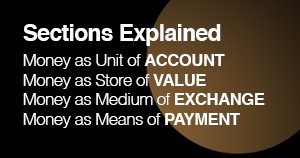Ten years ago, Indians relied largely on cheques to move money around the country, a legacy of the colonial era. Now India operates the most advanced digital payments system in the world, having leapfrogged Western nations in the process.
The economic advantage conferred by this technological jump is potentially huge—it’s worth at least three percent of India’s GDP, by one estimate, as well as giving the country a significant future competitive advantage in the increasingly digital global economy.
But the payments upgrade is not just the result of far-sighted planning, smart regulations and significant investment. It has also required the mandatory digitisation of Indian citizens’ identity, a step many Western countries have so far been unwilling to contemplate.
From a thousand clearing houses to a single UPI
In its 2011 ‘red book’ for India, the Bank for International Settlements (BIS) painted a picture of an antiquated, paper-based payment system. The BIS’s red books are the main reference publication for national financial infrastructures.
At the time there were 1,139 cheque clearing houses in India, wrote the BIS, of which only 66 used a form of automation (this involved reading the magnetic ink used to print characters on cheques). Cheques routinely took two weeks to be cleared, tying up working capital for households and businesses across the country.
the UPI system’s transaction volumes are expanding at incredible speed
A decade later, India’s payments system has changed from a reliance on Dickensian paper-shuffling to a single, real-time network, called the Uniform Payments Interface (UPI), that is ranked the best in the world.
Any Indian with a mobile device can access UPI, which is linked to the user’s bank account. UPI then permits the transfer of funds between accounts near-instantaneously.
UPI transactions now account for more than half of all digital payments in India, easily outweighing payments made by card, internet banking or bank transfer. And the UPI system’s transaction volumes are expanding at incredible speed.
“UPI experienced a tenfold increase in value and an eightfold increase in transaction volumes in 2019 alone,” Google Payments writes in a new report on real-time payments systems.
UPI now handles more than $22bn a month in digital payments. Google, which via its Google Pay app is a major player in UPI, expects this growth to accelerate further.
“By 2025, digital transactions in India could be worth $1 trillion annually, with four out of every five transactions being made digitally,” the tech firm writes.
Big data meets big brother—the role of national identity schemes
In its report, Google notes the importance of the legal and regulatory changes made by India’s government before UPI could be brought in.
These included the creation of the National Payments Corporation of India in 2008, the launch of the Immediate Payment Service (IMPS) in 2010 and initiatives to drive more people into the banking system and increase cashless transactions.
More controversially, Prime Minister Modi decided in 2016 to withdraw large-denomination banknotes from circulation overnight.
But perhaps the most important underpinning for the boom in digital payments in India was the introduction in 2016 of a country-wide national identity scheme, called ‘Aadhaar’ (Hindi for ‘foundation’).
the Indian national ID scheme is streets ahead of many Western countries
Aadhaar is a unique biometric ID given to each Indian individual. India’s 1.3 billion citizens must have it to access social benefits such as healthcare. More than 90 percent of the adult population is now enrolled in the programme.
Aadhaar, criticised by some observers as Orwellian, has also been accused of loose implementation standards: confidential data from the national survey has been leaked online and security researchers have highlighted other vulnerabilities.
In an effort to address concerns about the potential abuse of personal data, in 2018 India’s supreme court prevented private companies from requiring the use of Aadhaar numbers to verify clients’ identities.
Earlier this year, the Indian government passed a compromise amendment, allowing the voluntary use of Aadhaar IDs, including by the private sector.
But in terms of its coverage and absolute scale—Aadhaar has over 1.2 billion individual records—the Indian national ID scheme is streets ahead of many Western countries. In the UK, for example, the government launched a voluntary digital ID scheme called ‘Verify’ in 2014, but achieved adoption rates of less than 5 percent.
“Better electronic identification will be essential for UK households and firms to benefit from the digital economy”
The potential economic disadvantage resulting from poor digital identity standards was highlighted in the Future of Finance report, published this summer. The report was chaired by Huw van Steenis, a senior adviser to Bank of England governor Mark Carney.
“Better electronic identification will be essential for UK households and firms to benefit from the digital economy,” said the authors of the report.
“Customers and businesses need to prove who they are many times a day for a whole host of purchases and transactions, using a range of identity attributes. Most financial firms consulted bemoaned the cost and inefficiency of identity verification. Digital IDs could make this process seamless, providing the convenience of integration into platforms and e-commerce.”
“Secure digital identification would allow financial firms to better identify and authenticate customers, reducing fraud and facilitating compliance with ‘know your customer’ (KYC) and anti-money laundering (AML) requirements,” they said.
It’s unlikely that worries over country-wide ID schemes will go away: China’s social credit system, a different form of mandatory national database that is being used to rate the trustworthiness of the country’s 1.3 billion citizens, has been described as ‘big data meets big brother’.
In an attempt to assuage concerns about data protection, India’s central bank has so far prevented biometrics being used on the UPI network itself, while it also doesn’t allow citizens’ Aadhaar numbers to be used as a financial address within UPI. Instead, bank customers are responsible themselves for linking their Aadhaar numbers to their bank accounts, if they wish.
But these concerns must be weighed against the potential economic benefits that real-time payments technology confers.
Dave Birch, a payments expert and a past critic of Aadhaar, told New Money Review that the national ID scheme has been critical in underpinning the development of India’s new payments system.
Meanwhile, the countries that are lagging in payments technology, including many G7 nations, may well find that inadequate digital ID standards are soon contributing to a real drag on economic performance.
Don’t miss any more New Money Review content: sign up here for our newsletter









